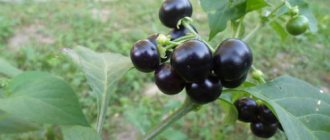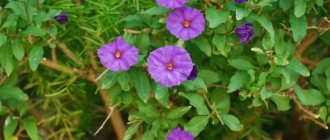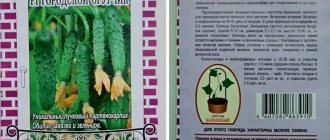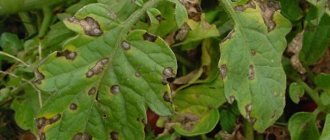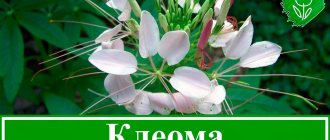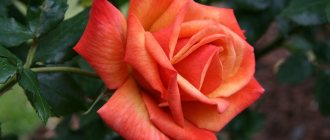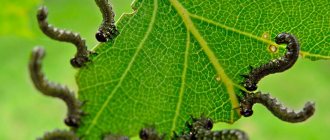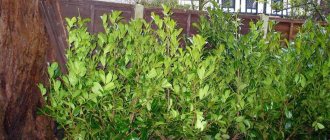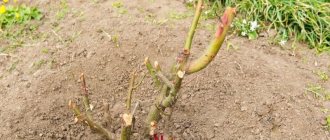Interesting information about nightshade
Nightshade (Solanum) is a genus of evergreen trees, shrubs, subshrubs, perennial and annual herbs belonging to the Solanaceae family.
The genus Solanum belongs to more than one and a half thousand plant species, distributed in warm areas of acceptable climate around the world. That is why the plant with small orange fruits has many popular names. You can hear: solanum, potato tree, Jerusalem cherry, Cuban cherry, indoor cherry. The South African continent and some countries of Southeast Asia are considered the homeland of the predominant part of the Solanaceae genus.
What is nightshade? The external characteristics of nightshade are absolutely not similar to each other, if, for example, you compare the same dark-fruited nightshade with potatoes, tomatoes, eggplants, or a valuable medicinal flower - black nightshade. In natural conditions, these are small shrubs covered with greenery all year round. The leaves are oblong oval shaped. Inflorescences are racemose or paniculate. Nightshade flowers are white, yellow, purple or pink, collected in racemose or paniculate inflorescences. Bright orange fruits, reminiscent of cherries, give the plant a special charm.
A houseplant with red berries called nightshade (solanum) has become a very common decoration and addition to the interior of apartments, offices, and balconies. And in order for indoor cherry to feel at ease, it needs to create conditions close to natural ones. Namely, air humidity should be high, do not forget about spraying and coolness in winter.
Indoor nightshade - propagation by seeds and cuttings
Nightshade can be propagated by seeds and cuttings. In the first case, seeds from ripened fruits are used. They are sown in peat or any other loose soil and lightly sprinkled with sand. The soil should be constantly moistened with a spray bottle. It is better if the container with the seeds is placed in a warm place and covered with film. As they germinate, young plants dive 1-2 times.
Indoor nightshade - propagation by seeds
You can grow indoor nightshade faster by cuttings. The branches remaining after pruning are used as cuttings. They take root well in a substrate of peat and leaf soil and grow very quickly, producing new shoots.
Sources used:
- https://rastenievod.com/paslen-komnatnyj.html
- https://ogorodsadovod.com/entry/1520-dekorativnyi-paslen-vyrashchivanie-i-ukhod
- https://faterra.com/katalog-komnatnykh-tsvetov/paslen.html
- https://vusadebke.com/cvetovodstvo/komnatnye-cvety-i-rasteniya/drugie-komnatnye/paslen-komnatnyy.html
- https://komnatnie-rastenija.ru/paslen-komnatnyj-uhod-v-domashnih-uslovijah-foto-vidov-i-sortov/
- https://vsejagody.ru/ekzoticheskie/fizalis
- https://floristics.info/ru/p-rus/solanum.html
- https://komnatnie-rastenija.ru/paslen-komnatnyj-uhod-v-domashnih-uslovijah-foto-vidov-i-sortov/
- https://sad-doma.net/houseplants/decorative-leaf/paslen-komnatny.html
- https://sad-doma.net/houseplants/decorative-leaf/paslen-komnatny.html
- https://cvetovoi.ru/komnatnye-rastenija/dekorativnolistnye/paslen-komnatnyj.html
Characteristics of the nightshade family
Solanaceae is a family of plants that, as of 2021, has 115 genera and more than 2,700 species. People encounter many of them every day: indoor flowers, common vegetables, tobacco and medicinal plants.
Representatives of the nightshade family
Representatives are divided into three life forms:
- herbs;
- shrubs (erect and creeping);
- trees (nightshade or acnistus).
Together with the Convolvulaceae family, they form the general order of Solanaceae.
general information
False pepper nightshade is a perennial evergreen plant that belongs to the nightshade family. The stems branch and become woody over time; the plant can grow up to 50 cm in height.
The leaves are medium-sized, oblong, glossy, arranged in pairs and densely on the branches. The flowers are formed small, shaped like stars, the petals are painted white.
Photo of nightshade
After flowering, round fruits are formed that look like cherries. As they mature, their color changes from pale orange to red.
How to prune for proper bush formation
The formation of a nightshade bush is carried out in winter. To give the plant an oval shape, I prune it in February. After all, at this time some leaves turn yellow and fall off. First of all, I cut the main stem at the top by 10 cm, and then the side leaves to get an oval shape of the bush. I cut off the main stem to allow the side branches to grow better. Nightshade easily tolerates pruning, thanks to which the stems become stronger and the plant bears fruit better.
In the next video you can learn more about how to plant nightshade
Toxicity and medicinal properties of the flower
Many people are concerned about the question: is indoor nightshade poisonous or not? Unfortunately, all parts of the plant are poisonous. Experts do not recommend growing this plant in a house where there are small children.
When choosing a nightshade variety to keep in an apartment, you need to start from how you plan to use it. If for purely decorative purposes, take the false pepper variety.
He is poisonous, but very beautiful. For medicinal purposes, pepper nightshade is chosen. It is used in the treatment of sore throat, healing of cuts and minor wounds.
In homeopathy, the plant is used to combat skin diseases, relieve ear pain, and treat rheumatism and gout.
All nightshade medicines that you decide to prepare at home must be made in accordance with the exact dosage. It is advisable to consult a doctor.
What is the appeal of indoor nightshade?
As you already understood, a houseplant with orange berries is nightshade, or solanum. Belongs to the nightshade family. Its homeland is the tropical part of South America.
There are various rumors about him. Some flora lovers are afraid to keep it at home. It turns out that the bright berries for which the flower is valued have poisonous properties. The fruits should not be eaten. Be careful if there are small children in the house. Place the plant on high, inaccessible shelves and cabinets, or avoid the flower altogether.
Nightshade does not produce any toxic fumes. If he just stands indoors, he won't cause any harm.
Nightshade is a small evergreen shrub. The leaves are shiny, oblong in shape. The fruits are large, similar to cherries, and have a fiery orange color.
A houseplant with orange berries, a photo of which will prove its beauty, will, with proper care, delight you with its ovaries and flowers. All this creates a beautiful picture. Therefore, nightshade is an excellent room decoration and addition to the interior.
Types of nightshade growing on our windowsills
Only dwarf plant varieties can be grown at home.
The bright orange fruits can last 5-6 months a year.
Peppery (pepper-shaped)
This variety was imported from South America and is a small green bush 30-40 cm high. I grew it last year. The plant blooms with small white inflorescences (flower diameter - 1 cm) all year round.
In summer and autumn, bright orange fruits appear, which is very pleasing to the eye and simply lifts your spirits. But the berries cannot be eaten, as they contain the alkaloid solanine, a toxic substance. They still bring benefits.
The fruits can be used in the treatment of sore throat, hypertension, wounds and cuts. I advise you to grow this particular variety! It bears fruit once a year, for a long time (from July to October).
False pepper
The Brazilian variety is a medium-sized green bush, 50 cm high. The leaves have an oblong shape, a glossy surface and grow densely. It blooms with small white flowers in the shape of stars.
The fruits appear in late summer and are round and red in color, similar to small tomatoes. At the beginning of ripening, the color of the fruit is orange. The ripe fruit has a rich, bright red color. The variety bears fruit from August to October, once a year.
Author's note
Natalia Papanova
Blog author
Never grow nightshade if you have small children living with you. Since even a small consumption of berries can lead to serious poisoning.
Don't want to grow inedible berries? Try growing strawberries at home. Going out onto the balcony, you can enjoy the sweet and tasty berries.
The most popular varieties
The nightshade family has about 1,700 members. The most common types of solyanum are kept at home, as well as in gardens and greenhouses.
Types of nightshade
In nature, there are several hundred species of nightshade in the form of trees and shrubs, but in cultivated floriculture you can more often find two varieties:
S. pseudocapsicum (false pepper) is a shrub up to 120 cm tall with long lanceolate or oval leaves. The fruits can be either orange-red or yellow, the flowers are white, five-membered.
Nightshade (Solanum pseudocapsicum)
S. capsicastrum (pepper-shaped) - similar to the previous variety, but different in size. Can be grown both at home and in open ground in the garden.
Pepper nightshade (Solanum capsicastrum)
Curly , this nightshade species is an evergreen vine. The flowers are shaped like stars, the fruits are light yellow in color. It is unpretentious in maintenance and is often used to decorate gazebos and walls. Unlike many representatives of its species, it tolerates cold well. Therefore, it can be used on external facades.
Solyanum vendlana is a climbing evergreen shrub that can grow up to 6 m in height. There are small thorns on the branches. The leaves are long (up to 10 cm), dissected in shape. The lower foliage is larger (up to 25 cm). This species has very beautiful purple-lilac flowers in the shape of a bell.
Which type of nightshade to choose is a matter of taste. It is also worth considering the size of the flower. Large spreading representatives are suitable only for large houses.
Varieties
More than 1,700 species of Solyanum grow in the tropics and some temperate regions. But we will consider only two of them, which are most often grown at home.
False pepper nightshade – S. pseudocapsicum. An erect evergreen shrub, growing up to 120 cm. Leaves with short petioles, oval or lanceolate, glabrous and slightly wavy.
The flowers are white, small, with five petals; the fruits are round, red or yellow, up to 1.5 cm in diameter. Originally from o. Madeira. Low-growing forms of decorative nightshade have been bred for indoor cultivation.
Pepper nightshade – S. capricasrum. Much smaller in size than false pepper, it has smaller berries and more tender shoots, green with a grayish tint. At home - in Uruguay and Southern Brazil, it grows in forests. The most popular varieties are: Craigii - with multi-colored fruits and Variegatum - a variegated variety.
popularly called the “angina tree” because its infusion is an excellent remedy against sore throat.
Reproduction
There are two methods for propagating nightshade: seeds and cuttings. By the way, the size of the fruit depends on the method of reproduction. Cuttings require time to root and adapt; fruits appear on them after a long time and are not large in shape.
Indoor nightshade produces strong bushes from seeds, and its fruits delight with bright color and decent size. Let's consider both methods in more detail.
Seeds
You can buy ready-made seeds or get them yourself from mature plants that bear fruit. First, they need to be disinfected in a weak solution of potassium permanganate, dried and distributed over the surface of the soil, sprinkled with a small amount of wet sand on top.
Cover the container with seeds with film or glass. Before sprouts appear, the greenhouse is periodically ventilated and the soil is moistened.
The emergence of seedlings should be expected in 2–3 weeks. As soon as the sprouts have appeared safely, the shelter is removed and regular watering and loosening of the soil begin. After the sprouts have formed 2-3 strong and healthy leaves, they can be planted in separate pots.
Cuttings
Choose healthy and strong branches. They are cut to a length of 10–15 cm and immediately planted in a pot. The soil should consist of equal parts sand and peat. Then the cuttings are covered with a glass jar and placed in a warm place.
The roots sprout in 2–3 weeks. It's time to transfer them to stationary pots with soil in the form of a mixture of sand, humus and peat. As soon as the young bushes are transplanted, they pinch out the upper shoots.
Propagation of indoor nightshade
There are 2 ways to breed this species in apartment conditions. It is easy to take cuttings from an existing mature plant during regular pruning . And by buying seeds, or collecting them from berries, you can grow new shoots.
Seeds
It is enough to simply get indoor nightshade from seeds. The main condition for rapid germination is loose soil. A large amount of available oxygen and heat will ensure mass seedlings . You can observe the emergence of new plants in late spring - early summer.
Algorithm of actions:
- Fill shallow containers with suitable soil. For seedlings, simple food cups or special containers with a closing lid are suitable.
- Carefully place the seeds on top at a distance of 1–2 cm from each other.
- Then sprinkle with a 0.5–1 cm layer of coarse sand.
- Moisten with a spray bottle in a moderate amount.
- Cover the top with film or a transparent lid.
- Place the greenhouse in a bright place with a temperature of 23 degrees.
- For seedlings to appear, abundant diffused lighting without access to direct sunlight is necessary.
- Germination should be expected no earlier than after 2 weeks.
- You can plant them in separate pots when the sprouts have 3-4 leaves. The soil should remain loose.
- After another month, the stronger seedlings can be transplanted into a permanent pot with suitable soil.
This video shows how to properly collect nightshade seeds, as well as sowing them.
Cuttings
Cuttings are obtained during pruning in early spring, when they are well rested and ready for active growth. Planting material must have a strong trunk , without signs of disease or damage.
Stages:
- All leaves are removed from the lower third of the branch.
- Dip the cut of the petiole in Kornevin (root formation stimulator), which is sold in garden stores.
- Place in a glass of water so that it covers the lower quarter of the cutting.
- After 2-3 days, change the water to fresh water and settle it until the roots germinate.
- Petioles with roots reaching 2–3 cm in length are transplanted into separate cups with a peat-sand mixture for rooting.
- After a month, the seedlings are placed in a permanent pot with “adult” soil.
After transplanting, it is better to pinch the tops to stimulate the growth of lateral branches, then the beautiful formation of the bush will immediately begin.
Simple rules for growing berry mosaics at home
It is not difficult to grow a crop on your windowsill. It thrives in a variety of soils. The main condition is that the soil must be loose. Often, fans of home crops grow indoor nightshade from seeds, carefully monitoring its development. The process begins in late May or early June.
The seeds are evenly placed in small containers filled with suitable soil. Then they are covered with a layer of sand about 1 cm and irrigated with a spray bottle. The containers are covered with plastic wrap and placed in a room where the temperature is not lower than 22°C. It should also have plenty of daylight. The first shoots will turn green on the surface of the earth in about 14 days. When they get stronger and there are 3 leaves on the shoots, the sprouts dive into other containers. After 30 days, the grown seedlings are transplanted again, but to a permanent habitat.
The last dive is carried out when the nightshade bushes grow to 15 cm in height.
When the plant takes root, you need to know the rules of how to prune nightshade and not harm it. The procedure is performed several times a year. At the end of February or beginning of March, all shoots of the crop are shortened by a third of the main length. It is best to do this when all the berries are ripening and when the foliage turns yellow.
To effectively form an indoor nightshade bush, additional pruning is carried out in April or early May. The procedure is repeated before the buds open. To increase the bushiness of the crop in the fall, new shoots are pinched to branches where there are no buds and fruit ovaries. As a result, a cute decorative decoration strewn with bright fruits will appear on the windowsill.
Lighting
Nightshade should be provided with as much light as possible. If it is deficient, it can shed not only buds, but also fruits and leaves. To obtain good fruiting, good lighting is necessary. In winter, it is advisable to illuminate nightshade artificially. If this is not possible, then place it on the most illuminated windowsill near a south-facing window. In winter, the sun's rays are not so burning, so they will not harm the plant. In summer, it is advisable to take nightshade out into the fresh air. There it will rest well, develop, and gain strength for winter flowering and fruiting.
Content temperature
In winter, the optimal temperature for keeping it is quite low and lies within +12-15 degrees. This is an additional reason to place it on the windowsill, where the air temperature is lower than elsewhere. High room temperature is the most common reason why nightshade leaves turn yellow and fall off in winter. In summer, the air temperature is not particularly important for this plant, especially if it is located outside. On average it lies within +18-25 degrees. The range, as you can see, is wide and small deviations from it are not critical.
Note. Indoor nightshade really does not like temperature changes and drafts.
Watering
During the growth, flowering and fruit formation stages, nightshade should be watered abundantly. Do not allow the soil to dry out. When the flower goes into retirement (autumn–winter), it is rarely watered.
Spraying
Indoor nightshade must be sprayed frequently. To do this, use pre-settled water at room temperature. Spraying is especially important when kept warm in winter. You can also place a small container of water near the plant to increase the humidity level.
Top dressing
In order for a plant to bloom profusely and bear fruit, it needs a large amount of nutrients. Feed the plant in the spring-summer period once every 2 weeks. For this purpose, complex fertilizer for flowering plants is used. In winter, you can not add fertilizers to the soil or feed it once every 4 weeks (you should use ½ of the recommended dose).
Trimming
It tolerates pruning well. And they do it after the nightshade stops bearing fruit, so that it does not lose its decorative effect. In the last weeks of winter, one can often observe yellowing and falling leaves. A procedure such as pruning significantly improves the condition of the plant. Be sure to shorten the main stem, as this will provoke the growth of side branches. You should also pinch their ends.
Transfer
It is recommended to replant in the first weeks of spring, before intensive growth begins. The soil should be loose and easily permeable to air. Do not forget about a good drainage layer, which may consist of expanded clay. It is needed so that excess liquid can freely leave the pot. First, the plant is cut back by approximately 1/3, and then planted in new soil.
This plant does not live very long. So, it soon grows out and loses its decorative effect. Therefore, some gardeners advise not to transplant nightshade, but to root a cutting taken from it.
Nightshade pot
A plastic or ceramic pot is suitable for growing indoor nightshade, as long as it has drainage holes in the bottom. Its size should be slightly larger than the root system of the plant. In a container that is too spacious, the soil may become acidic, which will lead to the death of the plant.
Priming
The soil for growing nightshade must be sufficiently nutritious and loose. It is made up of equal parts of turf soil, humus and sand. For growing, you can also use a universal substrate for industrially produced indoor plants.
At the bottom of the pot, be sure to arrange a drainage layer of expanded clay or river pebbles.
Pests and diseases
The most common nightshade pests are:
- whitefly . First, green larvae of this pest appear, which subsequently turn into small midges. Larvae and adults feed on nightshade sap. The plant begins to fade, its leaves turn yellow and fall off. To combat whiteflies, ready-made preparations for this pest are used. To completely destroy whiteflies, nightshade must be sprayed at least 3 times, with an interval of 3-4 days. Before each treatment, it is necessary to remove all damaged leaves;
- orange aphid . Colonies of these pests can be found on the underside of leaves. Like the whitefly, the orange aphid feeds on plant sap. As a result, the leaves turn yellow, curl and fall off, and the plant gradually dries out. A strong solution of laundry soap works well against orange aphids. The bush should be sprayed with it 2-3 times within one week.
Important! When working with soap solution, it is necessary to avoid getting it on the soil.
- red spider mite . This pest appears on nightshade when indoor air humidity is low. When infested by a mite, a thin cobweb with red dots appears on the stem and leaves. To get rid of spider mites, it is necessary to increase the general humidity in the room and regularly spray the plant with warm water. If these measures are not successful, then you should use acaricides. Instructions for use can be found on the packaging of the drug.
Fruiting
During flowering in the natural habitat, pollen is carried by even a slight wind. If it is not possible to keep the plant on the balcony or garden while the buds are blooming, you will need to pollinate it yourself to produce berries .
To do this, you need to take a regular painting brush with soft bristles and brush it over all the stamens with pollen. Attention! If you do not carry out this manipulation, then there is a chance that you will not get the berries or their quantity will be minimal.
Rest period
In winter, nightshade requires a period of rest. To do this, place the pot with the plant in a cool, well-lit place at the end of October. The optimal temperature for nightshade in winter is +13-15°. When kept warmer, the plant begins to suffer from spider mites and whiteflies.
Diseases and pests
If there is a constant lack of proper care, parasites or diseases may develop on nightshade leaves.
The following insects love to live on shrubs:
- Whitefly. It looks like a small light-colored midge. It sucks the juice out of the leaves, leaving a kind of sugar on the bottom surface. It is easy to suspect the presence of a parasite when the leaves curl and turn yellow. To combat whiteflies, you will need to spray the plant with an insecticide for flowers once every 3 days. In this case, it is better to replace the top layer of soil in order to remove unhatched insects on which the drug does not work.
- Aphids appear more often after summer exposure to fresh air . The pest is found on the upper shoots, where dried leaves begin to fall. It is necessary to spray the plant according to the same scheme as in the previous case.
- Spider mites appear as brownish spots on the lower surface of leaves. As the affected area increases, they dry out and fall off. In addition to treatment with acaricidal agents, it will be necessary to maintain high humidity around the plant , which will help suppress the vital activity of the parasite and increase the resistance of nightshade.
During cultivation, you may encounter other problems:
- curling and dropping leaves . If there are no pests on the plant, then the reason may be a lack of lighting for a long period. When dealing with this problem, it is important not to overdo it or expose it to direct sunlight. Burns from them also cause leaf fall;
- the plant turns yellow when there is a lack or poor quality of fertilizing. This can also indicate dry air, which can be easily corrected by frequent spraying;
- the absence or underdeveloped flowering indicates low air temperature, insufficient pruning of the plant or a deficiency of microelements;
- shedding of flowers or formed berries occurs when kept in a hot room or in the summer heat, which exhausts the bush and leaves no strength for fruiting.
Winter and summer nightshade care
Caring for a nightshade indoor plant in the cold and warm seasons has its own distinctive features. Features of seasonal care spring-summer .
- Young seedlings are watered as the soil dries.
- During the growth period, fertilizing is not needed. It is enough to carefully loosen the soil along the edges of the flowerpot so as not to injure the roots.
- When a nightshade blooms, it needs help transferring pollen from one flower to another (to pollinate).
- Upon reaching the age of 4-5 years, the plant is transplanted into a substrate mixed with turf.
- With the onset of summer, the flower is taken out into the open air to a shaded place protected from drafts.
- Water abundantly, adding fertilizer to the soil at least once every 2 weeks with a mixture of useful substances for tomatoes. Liquid fertilizers such as “Ideal” or “Rainbow” also give a good effect.
- Spray the leaves twice a day - morning and evening.
Features of seasonal care autumn-winter.
- As cold weather approaches, reduce the intensity of fertilizing and watering (water once every 10 days with soft water without chlorine). Nightshade should be in a dormant period from October to February.
- The pot with solyanum is placed in a cool, illuminated place with high humidity.
- Ventilate the plant once a week.
- At the end of February, the cherries will begin to wake up. During this period, you need to increase watering and start spraying.
Brief description of cultivation
- Bloom . It starts in February or March and ends in October.
- Illumination . Needs a lot of bright light, which should be diffused.
- Temperature regime . In the spring-summer period - from 18 to 26 degrees, and in winter - from 12 to 14 degrees.
- Watering . In April–September, the soil mixture is moistened when its top layer dries out. With the onset of autumn, the frequency and abundance of watering is reduced. And in winter, they just make sure that the earthen clod does not dry out.
- Air humidity . Should be high at any time of the year. To increase humidity, the pot with the bush is placed on a deep tray filled with wet expanded clay. On hot days, the plant is moistened with a spray bottle.
- Fertilizer . From the last days of spring until the beginning of autumn, nightshade is fed 2 or 3 times a month. To do this, use a complex mineral for flowering crops in liquid form.
- Rest period . Starts in October and ends in February.
- Trimming . In spring, after the fruits have ripened and the foliage begins to yellow.
- Transplant . It is carried out annually in spring immediately after pruning.
- Soil mixture . Sod and leaf soil, peat (1:1:1).
- Reproduction . Stem cuttings and seed method.
- Pests . Aphids, whiteflies and spider mites.
- Diseases . If humidity and air temperature are excessively high, the plant may shed its leaves prematurely.
Indoor nightshade: how to properly care for and replant
Possible difficulties when growing indoor nightshade
There aren't very many of them. But the main difficulty is that sometimes the nightshade does not want to bear fruit or the fruiting is scanty. The reason for this is under-pollination of the plant. Most often, this happens to plants that are constantly in the room and do not have the opportunity to fully pollinate. In this case, nightshade needs help. Artificial pollination of nightshade is not difficult. It is enough to walk over the flowers of the plant with a soft brush, transferring pollen from flower to flower.
The leaves are falling
Perhaps the problem is lack of moisture. The problem is especially acute in hot weather. This can also happen with excessive watering, when the roots begin to rot.
The berries are falling
If nightshade fruits begin to fall at the wrong time, it lacks light and humidity. It is worth moving the pot to a place where there is more light and spraying it more often.
No ovaries
The reason is that pollination did not occur. You can do this yourself using a soft bristle brush. Flowers are naturally pollinated only in the open air.
Spider mite
This pest affects many indoor plants. Its appearance is determined by the formation of small cobwebs and dark spots on the foliage. The plant begins to gradually dry out. To eliminate the problem, the foliage is sprayed with chemicals (Decis, Phosbecid), alternating with a soap solution.
Reproduction methods
Cuttings
Stem cuttings are used to propagate indoor nightshade. After the plant is pruned in the spring, the remaining pieces are not thrown away. Select the most powerful and completely healthy sections and plant them for rooting. To do this, you can use a mixture of peat and sand, or vermiculite, or just sand.
When the cutting takes root, it is planted in a permanent individual pot, which is filled with an earth mixture consisting of sand, turf and humus soil (1: 1: 2). Don't forget to make a drainage layer at the bottom of the container. Pinch the tops of the stems of the transplanted bush to enhance its branching. During the summer period, you can make several light prunings, which will also help stimulate the plant to tiller.
Pruning and propagation of nightshade. Results after six months
Growing from seeds
To propagate nightshade, the seed method is also used. Start by filling a small container with sifted leaf soil. Distribute the seed material evenly over the surface of the substrate. Cover the seeds with a thin layer of sand. The crops are slightly moistened with a spray bottle, covered with glass or film on top and transferred to a place where it is always warm (about 22 degrees).
The first seedlings should appear after about 15 days. As the seedlings grow and develop, they will need 2 picks. Then the bushes are transplanted into a soil mixture of turf and humus soil, as well as sand (1:2:1). Next, they are cared for in the same way as rooted cuttings (see above).
